- About Us
- Columns
- Letters
- Cartoons
- The Udder Limits
- Archives
- Ezy Reading Archive
- 2024 Cud Archives
- 2023 Cud Archives
- 2022 Cud Archives
- 2021 Cud Archives
- 2020 Cud Archives
- 2015-2019
- 2010-2014
- 2004-2009
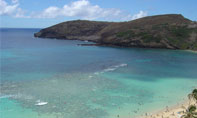 |
Musings From An Upturned Canoe In The Middle Of The Pacific |
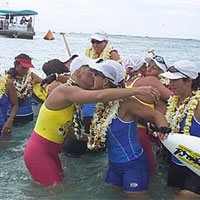
Last Sunday the Hawaiian Islands played host to the Molokai to Oahu Canoe Race – a 40 mile race across open ocean, where teams of nine paddlers change in and out of six-man outrigger canoes. A Sepo (read: American), grasping for an understanding of the significance of the race was heard to say “Oh, so it’s like the Superbowl for outriggers, then?” Slightly insular though the comment may have been, it was appropriate enough after 6 hours of open water racing when we reached the bikinis and coconut oil of Waikiki Beach, a certain match for any gridiron cheerleaders. Unlike the Superbowl however, the race has an international flavour, hosting clubs from Tahiti (whose crews claimed first, second and third this year in reasonably calm conditions), Australia, New Zealand, the US, Italy and Canada – including two crews from Vancouver’s False Creek Racing Club (my entry into the festivities).
Around an hour into the race, while trying to re-float our capsized boat in open water, it became apparent that the Hawaiian Islands are an appropriate setting for constant ‘changes’ and a place that reveals the unexpected – not quite the choreographed order of the Superbowl. Having spent the week in Hawaii training, racing, surfing, visiting the North Shore and Pearl Harbour (as they say, “A cold morning when there was a ‘nasty nip’ in the air”), it became apparent that this remote string of islands maintains a delicate balance between its own history and resources, and the influences of the outside world. (Aside from Easter Island, Hawaii is the body of land furthest from any other landmass in the world.)
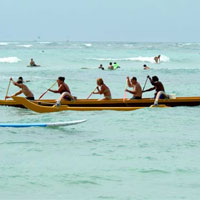 When Cook arrived in Hawaii in 1778 (naming them the Sandwich Isles) he ended the peaceful isolation of the islands – most obviously with his crew bringing in syphilis that decimated the population. Two more recognisable Hawaiian icons, the grass skirt and the ukulele, were also only recent 19th century additions from Micronesia and Portugal respectively (both more gratefully received than the Endeavor’s venereal diseases, mind you).
When Cook arrived in Hawaii in 1778 (naming them the Sandwich Isles) he ended the peaceful isolation of the islands – most obviously with his crew bringing in syphilis that decimated the population. Two more recognisable Hawaiian icons, the grass skirt and the ukulele, were also only recent 19th century additions from Micronesia and Portugal respectively (both more gratefully received than the Endeavor’s venereal diseases, mind you).
While two of its smaller ‘introduced’ icons are among its most famous, the names Mauna Kea and Mauna Loa are less familiar despite their size and significance. The peak of Mauna Kea is only 4,205m above sea level, however its underwater base - 5,988m below - makes it the tallest mountain on earth at 10,203m from base to summit. The neighbouring peak of Mauna Loa is 36m lower, however it is the most voluminous mountain on Earth with a volume of 74,000,000,000,000 cubic meters (74 Tm3).
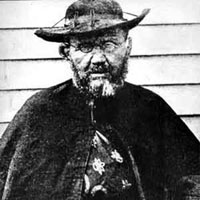 Funnily enough, these giant peaks offer a hint of the bemusing local (oral) Hawaiian language, which when written down by Europeans for the first time amounted to 6 consonants (H, K, P, M, L, W and N) and the five common vowels – it would make the Hawaiian version of ‘Wheel of Fortune’ reasonably easy.
Funnily enough, these giant peaks offer a hint of the bemusing local (oral) Hawaiian language, which when written down by Europeans for the first time amounted to 6 consonants (H, K, P, M, L, W and N) and the five common vowels – it would make the Hawaiian version of ‘Wheel of Fortune’ reasonably easy.
And finally, our outrigger race linked the homes of two of the best-known figures in Hawaiian history – a local surfer and a Belgian missionary. From 1856 the Belgian Catholic priest - Father Damien lived and worked in the leper colony on Molokai Island until his death in 1889 from leprosy – a fate to which he was doomed by his intimate contact with the quarantined sufferers. As a result he is now the spiritual patron of people with leprosy, outcasts, and those with HIV/AIDS (and also the State of Hawaii). He was also the subject of the 2000 film “Molokai” in which he was played by Australian actor David Wenham – perhaps that will amount to the miracle required by the Vatican before he is made a saint... In fact, in 2005 Father Damien was chosen by the Flemish public broadcasting service VRT as the Greatest Belgian of all time (adding to that contentious European game of “Naming 5 famous Belgians”).
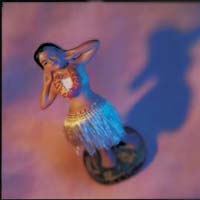 So after leaving Molokai, capsizing after an hour (to‘huli’ in the local dialect), righting our upturned outrigger and racing home, the race ended at Waikiki – home to the legendary Duke Kahanamoku. "The Big Kahuna," a Hawaiian local was an Olympic swimming champion in the 1920’s and the man generally regarded as the inventor of surfing (originally on his ‘fin-less’ 50kg-plus Koa wood boards).
So after leaving Molokai, capsizing after an hour (to‘huli’ in the local dialect), righting our upturned outrigger and racing home, the race ended at Waikiki – home to the legendary Duke Kahanamoku. "The Big Kahuna," a Hawaiian local was an Olympic swimming champion in the 1920’s and the man generally regarded as the inventor of surfing (originally on his ‘fin-less’ 50kg-plus Koa wood boards).
The race over, we tore into the obligatory celebratory beers and a flight back to autumn (fall) in Canada, leaving Hawaii to its surf, sunshine, mountains, waters and ceaseless stream of visitors.
